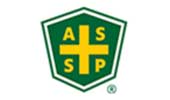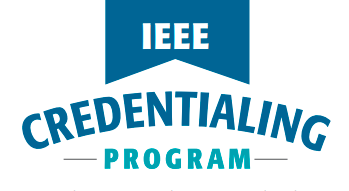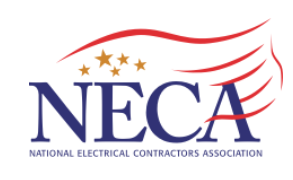Electrical Maintenance
The e-Hazard Safety Cycle™
Consensus standards, like the NFPA 70E®, recommend using maintenance standards (NFPA 70B® or NETA MTS) or manufacturer’s (Original Equipment Manufacturer – OEM) recommendations as part of the electrical safety program (ESP). Most companies have established a maintenance strategy (such as Reliability Centered Maintenance, Total Productive Maintenance, etc.). If this is not the case, it is essential that some method be considered as the starting point. As an introduction to the “Electrical Maintenance” element in the e-Hazard Electrical Safety Cycle™, developing a maintenance strategy is essential.
“Electrical Maintenance” is considered an important element in the e-Hazard Safety Cycle™ as it exposes workers to both shock and arc flash hazards. Many electrical incidents occur when doing maintenance since changing the state of the equipment is a common time for equipment to fail. Human factors pose other risks. In the absence of maintaining to OEM and best practise guidelines, the risk of unplanned failure is increased. This places the worker directly in harm’s way. Another important reason to perform maintenance is to ensure the safety of the public against disasters from chemical processes, nuclear plants, power plants, and other “just in time” processes.
Envision: Identify Electrical Maintenance Requirements
- a. Voltage (HV vs. LV)
- b. Effect of equipment on arc flash study in case of failure
- c. Effect on the operation of the plant
- d. Effect on the plant safety equipment
- e. Effect on public safety
- f. Other effects based on production or site priorities

3. Split maintenance activities, per electrical equipment, into minor, moderate, and major overhaul categories. Assign timelines to each of these. For example, greasing motor bearings does not run on the same frequency as infrared thermography.
4. Identify, assign, and price. What needs to be done? Who will do it? How much will it cost? When can it be done? At this stage, consulting with OEMs and Subject Matter Experts (SMEs) comes into play. Part of these activities can be referred to as maintenance plans.
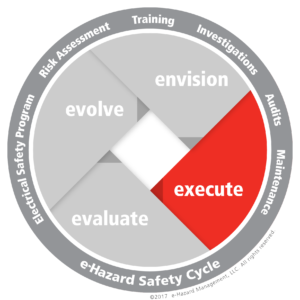
Execute: Perform Electrical Maintenance
1. Engage the workforce in training and awareness, and launch the program. Consider involving both management and the labor workforce. This program will require finances, people resources, and possibly planned shutdowns. Training may include training for specialized tasks and generic training on the maintenance strategy. At this stage, be prepared to listen to both parties and adjust the maintenance strategy or maintenance plan.
2. Transfer the plans into the Enterprise Resources Management System (e.g. SAP, Oracle, Infor, Epicor, etc.). These will make the maintenance program robust and independent of staff turnover.
3. Perform maintenance.
Evaluate: Review Electrical Maintenance Program
1. Maintenance strategies do not have instant paybacks. It takes a while to balance time, people, cost, and quality. For the majority of organizations, developing key performance indicators, at equipment or process level, provides a good score of the return on investment in the maintenance strategy. As an example, keep track of the outage time, repair cost, and production influence as a result of motor bearing failures due to under-greasing / over-greasing. After a year of inspecting and lubricating, note if any changes materialised. Did the organisation reduce unplanned interruptions, reduce repair costs, etc.? Another example would be a critical circuit breaker that has a three-year planned maintenance activity. How did the activity contribute to reducing risk? Assign a cost to this risk mitigation and use it to support ongoing maintenance.
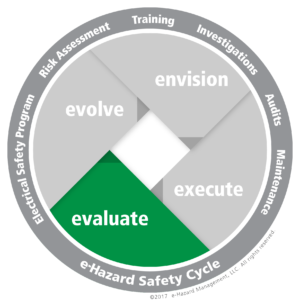
2. Incorporate a link between the “Incident Investigation” element in the e-Hazard Electrical Safety Cycle™ and the “Electrical Safety Maintenance” element. These will quickly identify problem areas. In order to achieve this, ensure that the maintenance manager (or engineer) is involved when investigating equipment failure. In this way, management is linked to the root causes of failure. Alternatively, ensure that equipment failure (above a certain cost or risk threshold) is formally investigated to uncover root causes and provide remedial actions.
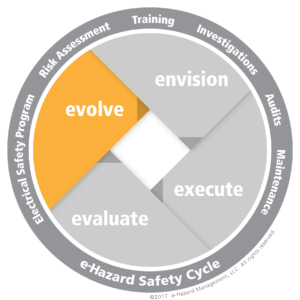
Evolve: Adjust Electrical Maintenance Schedule and/or Activities
1. Resolve the problem areas. Sometimes challenges in the electrical safety maintenance strategy may be rudimentary and are resolved internally (within a department or section). In other cases, OEMs and SMEs may be brought back into the program to resolve difficult issues.
Changes may have to be rolled out in stages instead of rolling out major maintenance changes in unrealistic time frames. Ensure there is cross-departmental agreement (consider all areas: financial approvals, staff scheduling, production constraints, etc.)
In future articles on the “Electrical Safety Maintenance” element in the e-Hazard Safety Cycle™, further information will be provided on the types of maintenance strategies and developing maintenance plans. These will include specific details of equipment that display high failure rates or provide higher risk of injuries to workers.
For more information on predictive maintenance and the effect on an arc flash study, see D. R. Doan’s article, “Prioritizing Circuit Breaker and Protective Relay Maintenance Using an Arc Flash Hazard Assessment,” in IEEE Transactions on Industry Applications, vol. 49, no. 2, pp. 799-802, March-April 2013.
¹ See the “Risk Assessment” element in the e-Hazard Electrical Safety Cycle™.
Ready to Get Started?
Join thousands of happy customers who have used our services.

